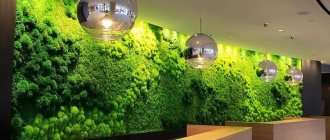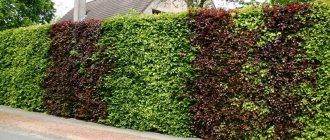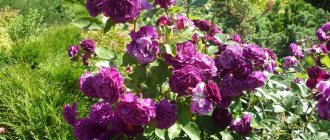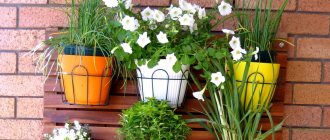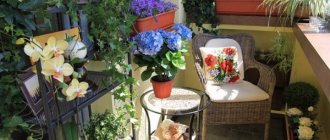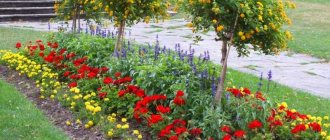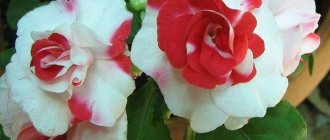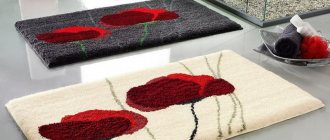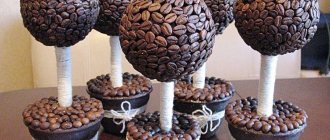Features of flowers in the aquarium
To create a mini garden in an aquarium, called a florarium, glass tanks of a certain shape are used. They are filled with various types of vegetation and decorative elements.
There are many options for mini aquarium gardens. Among the extensive list are:
- Sealed or open structures.
- Nano models and large containers.
- A garden in an aquarium with lighting and heating equipment.
- Containers with and without liquid.
- Wall-mounted, hanging and floor-mounted models.
- Models that are installed on a window sill or on a stand.
To create succulents with flowers with your own hands, aquarists use:
- Bottles.
- Aquariums.
- Glass aquariums.
- Banks.
What will you need?
In order to create a composition in an aquarium, which is called a florarium, with your own hands, you will need certain elements and tools.
- Glass tank. A round aquarium is suitable for these purposes. Aquarists often plant vegetation in a spherical tank. Other containers made of glass are also suitable for these purposes.
- Substrate. To create succulents with your own hands, use pebbles, large expanded clay or sandstone. It is necessary to prepare a lot of substrate, since excess water is stored in it. Only with the required amount of drainage is the likelihood of root system oxidation reduced.
- Activated carbon. This component is introduced into the substrate in order to get rid of extraneous odors. As a rule, activated carbon is introduced into the container if tropical aquariums with vegetation are created.
- Soil for vegetation. For normal development, succulents need fine sand. If orchids are grown in a tank, then soil with tree bark is prepared.
- Selection of flowers and vegetation. It is better to give preference to indoor plants in the aquarium that grow slowly.
- Decor. To create unique compositions, a variety of figurines made of plaster, ceramics or glass, moss, and other decor are suitable.
- Tools. To prepare and decorate containers, you need a certain tool.
Vegetation selection
Not all flowers are planted in an aquarium. Some species develop quickly and therefore die in a confined space. Planted in the container:
- Miniature fern. It is distinguished by wavy leaves.
- Moss. Using moss, the substrate is decorated, the bottom and decorative components are filled.
- Plaunkaceae and Crotonaceae. With their help, the tank is filled with bright colors and greenery.
- Orchids, violets. These aquarium flowers are easy to care for.
- Cacti, both decorative and flowering.
Succulents are often used to fill florariums. They are popular because:
- Unpretentiousness.
- Easy to care for.
- Brightness.
- Attractiveness.
- Watering them does not require much water.
Succulents are used together with other representatives of the flora, fish and shellfish phenotypes. With their help, they create unique compositions.
Types and devices
Depending on the type of container and the shape of the planted plants, miniature greenhouses behind glass are divided into several types. From a botanical point of view, a florarium can only be closed with limited access of air from the room. Such products create the most favorable atmosphere for fastidious plants, optimal humidity and temperature. There are also dry gardens with sand that do not require watering.
Florariums with open access to plants are more common. The ecosystem in a glass or aquarium is also individual, but is concentrated at the bottom of the container. These can be single plants or a whole group. You can make single-tier or multi-tier compositions.
Which container is suitable?
They create living accessories from the most unusual glass objects. They differ in geometric shape, size, and decorative elements. Depending on the type of container, the following natural greenhouses will be obtained:
- Aquarium. Containers of any shape (round, square), open or closed are suitable. You can plant a wide variety of plants, use any decorative drainage;
- Bottled. Created from any vessels with a narrow neck and large capacity. Plants that do not develop rapidly are planted in such a container. It is difficult to give a craft a beautiful appearance. Great for woody greens.
- Wall-mounted. The products are distinguished by the possibility of hanging on the wall. They are significantly smaller in size than floor-mounted ones. Can be closed or open;
- Mini florariums. To make compositions, small glass attributes are used: transparent Christmas tree decorations, cups, glasses, vases. Plants should also be miniature. Succulents, mini-violets, ivy and others are suitable.
Plants - recommendations for selection
Low greenery with slow growth is suitable for decorative bottle gardens. If a composition is created from different species, then the tallest specimen is placed in the center, and the middle ones are planted around it. The smallest ones are located at the edges. Plants growing in the same container must have the same care requirements and be combined in color and texture. You can collect them yourself in the forest, planting, or buy them in a specialized store. The most suitable types for a flower terrarium are:
- Mosses and ferns. They feel great in humid environments. Sphagnum moss in the florarium is used to fill the space. This type of moss ranges in color from whitish to deep green. They mask pots and wrap driftwood. The fern used is Nephrolepis. A bunch of feathery leaves looks beautiful as a separate plant or as a background for a composition; it requires frequent thinning as it grows quickly.
- Beautiful flowering plants. The orchid is recognized as the most beautiful for a garden behind glass. To grow a whimsical plant, a specially designed florarium is required, equipped with heating and ventilation systems. Saintpaulias (dwarf violets) grow surrounded by velvety leaves. You can also plant hybrids of cyclamen, guzmania, azalea, but subject to their stabilization with glycerin.
- With unusual leaves. One of the most popular plants for florariums is fittonia. All its leaves have pink or white veins. Suitable for open aquariums only. Crotons are decorated with golden spots on the leaf plate. The greenery of alocasia is elongated and has a pointed shape.
- For dry greenhouses. Cacti and other types of succulents are usually grown in such an environment. Plants can survive for a long time on their own moisture reserves. Special desert landscapes are created for them. You should pay attention to echinopsis, rebutia, prickly pear, and crassula varieties.
Soil for florarium
The soil should be selected based on the needs of the plant. It is better for novice florists to take ready-made mixtures and substrates. To independently prepare universal-purpose soil, you need to mix it with sand in a 1:1 ratio. For succulents and cacti, lighter soil is needed; sand should be added in two parts.
Since there are no drainage holes in the florarium, artificial soil looseners are simply necessary. Place pebbles at the bottom of the container, cover them with moss or a piece of burlap and cover them with a layer of charcoal. For undemanding plants, the soil can be taken from the garden or forest. It must be disinfected, since a humid environment is favorable for the development of mold and fungi.
If you need to create a composition of plants with different soil requirements, they are planted in pots, wrapped with decorative fragments, for example, moss. This technique will allow you to care for each element individually.
Planting vegetation without water
Before making a florarium for flowers with your own hands, prepare containers and pots.
Before doing everything, a pre-selected substrate is poured into the bottom of the container. If necessary, stones and other decorative elements are scattered along the bottom.
After this, perform the following actions:
- Holes are prepared in the soil, the diameter of which is from 3 to 5 mm.
- The holes are filled with water.
- The packaging is removed from the root system. The plant is placed in the hole.
- The soil around the root system is thoroughly compacted. This procedure is performed using an eraser.
What do you need to assemble your own florarium?
To assemble a florarium with your own hands, you will need:
- Prepare everything you need. Wash and disinfect the container thoroughly - it is best to pour boiling water over it thoroughly.
- Place drainage at the bottom of the container - its height should be at least 30% of the desired soil height.
- Place charcoal or even crushed activated carbon on top of the drainage. This will help disinfect the soil when it is watered or sprayed with water.
- Lay out the base soil, level it, prepare holes for plants and plant them, forming an aesthetic composition. It is necessary to sprinkle the roots with soil, remove large leaves so that they do not lean against the walls of the flask (otherwise the leaves may rot).
- Spray the plants with water. And the last thing is to place decorative elements.
Lighting
Both standard florariums and aquariums with plants and fish require lighting. LED strip or fluorescent lamps are suitable for these purposes. You can make such lighting equipment yourself.
- Energy efficiency. This type of lighting is characterized by maximum efficiency.
- Safety. Since the voltage is 12 Volts, such lighting will not cause any harm to representatives of flora and fauna.
- Availability of adjustment. Through such an element the degree of luminous flux changes.
- Possibility to choose the shade of light. Different plants require a certain spectrum. In accordance with this, LEDs are selected.
Master class: DIY florarium
ReLend.ru » Crafts » Master class: do-it-yourself florarium
Beauty made with your own hands deserves admiration and long-term admiration. This unspoken rule does not bypass such a wonderful craft as a florarium. It can be purchased ready-made, but for those who like to create true beauty on their own, it is recommended to make it yourself.
In this case, it is necessary to listen to the useful advice of masters who can help solve the problem that has arisen during the work process. So, how to make a florarium with your own hands , a master class and some expert advice.
Contents of the article [hide show]
The concept of a florarium and its purpose
Florarium is a miniature home greenhouse , which can be so diverse that it will perfectly suit your interior with different design styles. The presented craft is often called simply - gardens in a bottle . This means that such products can be easily constructed in an ordinary glass vessel.
The purpose of the florarium is quite simple - it is used for interior decoration . Sometimes you can find peculiar greenhouses placed on the wall or even under the ceiling on a thick rope. The main feature of using the presented crafts is to somehow select parts and plants for the greenhouse in accordance with the design of the room. The appearance of the described decorative element is purely your personal prerogative.
How to make a florarium from indoor plants, video:
Florarium in the photo:
Types of florariums and their use in the interior
The most unusual glass and transparent vessels and containers are suitable for florariums. Possible vessels for the composition can be collectively divided into several types of greenhouses:
- Bottle view – includes all types of vessels with a narrow neck and large capacity. An ordinary bottle is practically not used, since it is difficult to plant ready-made plants in it and give a beautiful appearance to the craft. It is better to plant plants that do not grow quickly in bottle containers; woody plants also look great here.
- Aquarium view - here we mean any containers of more regular shapes, for example, a square, circle or rectangle. The advantages of this type are that you can plant a wide variety of plants here, use decorative drainage and other small attributes for beauty.
- Mini florarium – Rarely used in a single copy. Typically, glasses, Christmas tree balls and other small attributes are used to make them, where you can place a miniature garden of plants and flowers.
- Wall-mounted florarium is a “half-vessel on plywood.” It is quite difficult to make it yourself, so it is better to purchase a ready-made composition with used plexiglass and other decorative elements.
As for use, it can be noted that aquarium-type florariums , since there is more space and light for “flights of fancy.” For these types of greenhouses, not only plants are used, but also flowers during the budding period.
But the bottle type is used in offices and other establishments where there is not enough light or space to place even an ordinary flower pot. People prefer to look for a way out of the situation and find it in the form of the presented greenhouse.
renovation how to find out when demolition
Basic requirements for making florariums
You will probably be surprised, but a florarium is not so easy to make. Or rather, for its continued long-term existence, it is necessary to follow certain rules and features in the choice of materials.
Vessels for homemade greenhouses
As mentioned above, the presented compositions can be made from any vessel. But when choosing, pay attention to the thickness of its walls. If the vessel is voluminous, but the wall thickness does not correspond to the specified parameters, it is not recommended to use it, since there is a high probability of it splitting after adding soil.
Plants for a homemade greenhouse
An important role is played by the selection of suitable plants and flowers for planting. For example, most people prefer to plant cacti in homemade greenhouses. This is a bit of a wrong decision, since these plants will not feel comfortable in humid conditions. The exceptions are tropical cacti and some succulents.
When choosing plants for a greenhouse, you should pay attention to the following expert advice:
- For florariums, it is recommended to choose plants that reach a height of no more than 20 cm. They should “have preferences” for humidity and appropriate light conditions, depending on the location of the finished greenhouse.
- Ferns, fittonias, arrowroots, calamus and other small and slow-growing varieties of plants are often planted in florariums.
- If you prefer to plant plants with bright colors in your greenhouse, it is recommended to choose varieties with a low risk of rotting. Therefore, pay special attention to varieties such as cyclamens, azaleas, violets and other flowers. They are most susceptible to rotting, so they must be planted in large, large containers with good ventilation.
- It is recommended to grow such “capricious” flowers as orchids separately in special containers, where it is possible to equip the greenhouse with heating equipment and a barometer.
The choice of plants must be approached with special care. Carefully study the growing conditions of the selected plant and make a decision on planting it in your type of florarium.
Additional attributes
Plants for a florarium can be so whimsical that they require additional attributes. So, here we can highlight the following aspects:
- Lighting. Sometimes the greenhouse needs additional lighting. This can be done by placing the finished element next to a regular home lamp, or you can purchase special lighting devices for florariums. At the same time, you should not choose bright lamps so that the emitting light does not cause inconvenience while in the room.
- Thermometer and hygrometer are important additional devices that allow you to maintain suitable temperature and humidity in the created composition. Plants require regular care, so it is important that they remain in an environment suitable for them. The presented devices will help you cope with the task, but do not forget to monitor the indicators and take appropriate measures if a deviation from the norm is detected.
- Fan . Surprisingly, many plants sometimes need a fan, since they require ventilation and constant blowing of the leaves. In order not to end up with a herbarium instead of a florarium after a while, it is recommended to purchase special miniature devices that will not take up much space, but will bring a visible effect and tangible fruits.
DIY florarium, video:
DIY florarium from an aquarium: master class
As you already know, you can use a wide variety of vessels to make your own mini-greenhouse at home. To do this, you can simply comb through your own mezzanine or balcony in search of a suitable container.
If you cannot find such a vessel, use a regular aquarium, which you can purchase new or use a previously used vessel.
How to make a florarium with your own hands? Follow the advice of the masters and you will succeed.
Choosing a location for a florarium
Before composing the composition, consider its further location. Firstly, it must be located in plain sight so that guests can admire it. Secondly, it must be combined with the interior you have chosen.
Materials and tools used
To make a florarium you will need materials that will only suit the flight of your imagination. But the main details can be identified as follows:
- drainage - it is placed on the bottom, various bulk products are used (river sand, colored decorative sand, broken brick, etc.);
- suitable soil - depends on the type of plants used;
- sphagnum moss or any other type of plant to retain moisture;
- surface decor - pebbles, glass beads and other bulk components;
- decorations - it all depends on your imagination; figurines of animals, people, mini-furniture and other attributes are suitable.
Along with collecting materials, it is necessary to select the tools that will be required for the work. Here you will need gloves, tweezers of distinctive sizes, a syringe for further watering or a watering can, a spray bottle for wetting each layer of soil, and any item for digging.
Master class on making a florarium with your own hands
When making your own florarium, follow the following sequence:
- Rinse and dry the selected greenhouse container.
- Place a small layer of drainage on the bottom of the vessel and moisten it with water.
- Pour out the soil for planting. You can add any additives to the soil as plant food, but only those types that are suitable for the varieties and species you have chosen.
- Prepare the plants - remove yellowed leaves and clean them of soil and other debris.
- Using tweezers or your fingers, plant the prepared flowers as you originally intended. Don't forget about the location of moss or other types of plants. You can dig up the soil for planting with a teaspoon, a chopstick, or toothpicks. Then sprinkle each plant with soil and tamp it down lightly.
- Moisten the soil with water from a spray bottle. If necessary, water the newly planted plants with a watering can or syringe.
- Use a decorative layer. It can be placed on the entire surface, or only in parts - stick to the originally conceived plan.
- Arrange other decorative elements if desired. If necessary, secure them with the same decorative pebbles or glass beads.
That's it, your DIY florarium is ready. Now you just need to monitor him in compliance with all the rules.
Rules of care
- Watering. Water should be introduced into florariums carefully. After all, an excess of water will cause damage to the root system. The degree of humidity is controlled manually or using tools.
- Trimming. In order for vegetation and flowers to develop well, side shoots are periodically removed. They interfere with normal development.
- Introduction of fertilizers. The introduction of mineral fertilizers is carried out carefully. Their excess leads to the accumulation of salts that do not dissolve. Salts affect the shade of shady plants and flowers.
- Lighting. The duration of daylight hours is set individually. Different species require one type of lighting or another.
Creating a mini-garden in an aquarium is a fascinating activity that both beginners and experienced aquarists can handle. All necessary items can be easily purchased in specialized stores. When selecting vegetation, the features of maintenance and care, pruning and feeding are taken into account.
